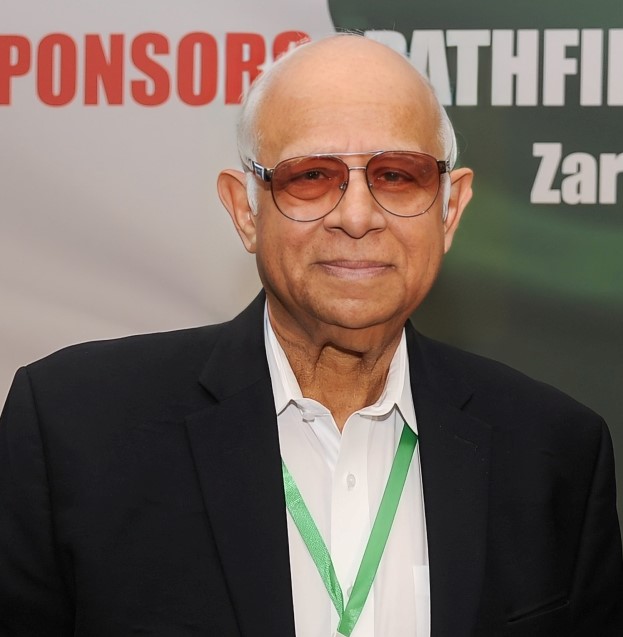
Chairman Pathfinder Group and KCFR Mr. Ikram Sehgal: We are lucky today to have our senior banking presidents here of three major banks of Pakistan, and also State Bank executives for today’s session on Visionary Banking in Pakistan. We have Mr. Shahzad Dada as the keynote speaker. This is our last function this year as Pathfinder Group and Martin Dow and we look forward to welcoming you again Insha’Allah next year in January; hopefully there is no further outbreak of a different kind of pandemic by then.
I have nothing much to say more, and I’ll give it to the person who’s going to moderate today. Salman is the Chief Executive Officer of Virtual Remittance Gateway, known as VRG which has got one of the most innovative things in the world today. It is regulated by the State Bank of Pakistan and the Pakistan Telecommunication Authority, you can open a bank account from many telcos to many banks in less than two minutes. We call that a real game changer because poor man or what we call it now – I’ve been corrected by my son, he told me not to call it poor man’s debit card, and call it a deprived person’s debit card – and that is exactly what’s going to happen i.e. the mobile wallet that he has in his hand is going to act as a debit card and for the first time he will have financial access to the system. All three presidents here have already got plans in the works. I am not going to take the thunder away from them but they have got plans in the works. My son also has taken over the mantle from me but the idea of that came from my youngest daughter Nefer. She came to me and said Abu, this is nonsense that my driver cannot open a bank account. After this she disappeared into bags and documentaries and musicals, she does that every two years and does it very well.
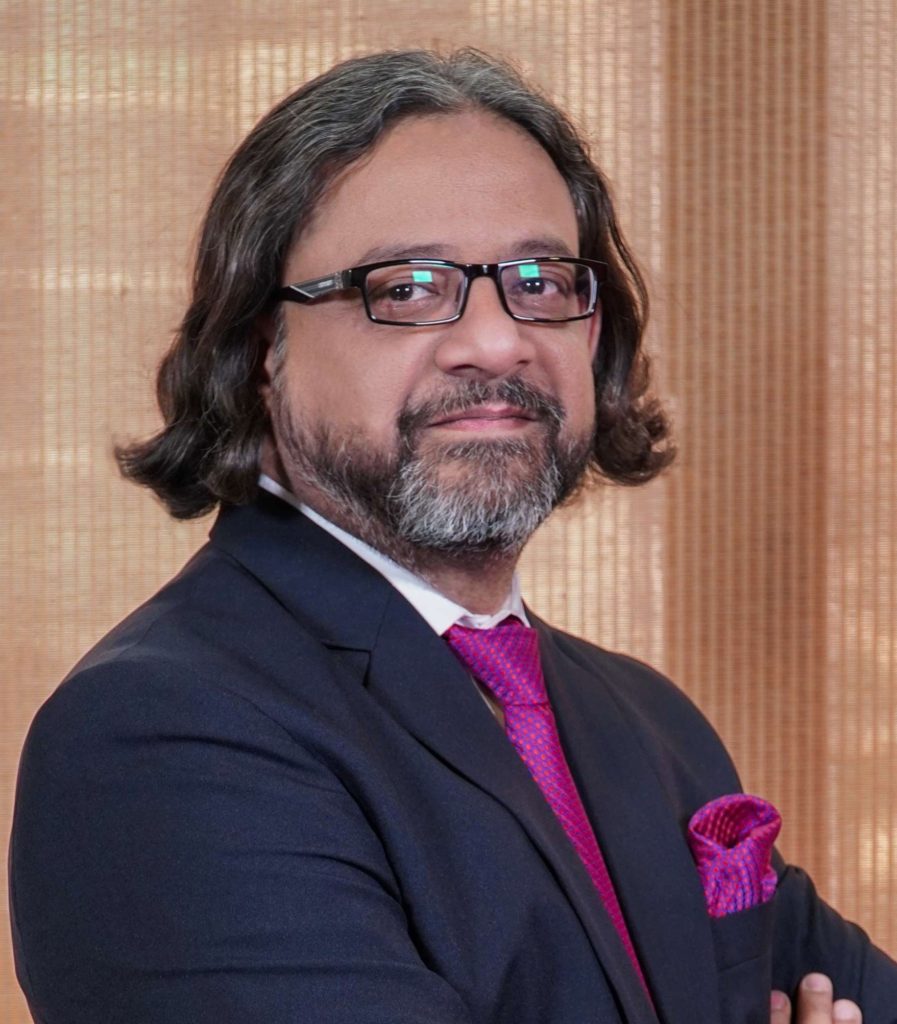
Salman Ali, CEO VRG: Ladies and gentlemen, today’s session is on Visionary Banking in Pakistan. We have some distinguished guests here. I would like to welcome Mr. Ali Akhai, Chairman Martin Dow Group. I will introduce our distinguished guests; starting from Mr. Shahzad Dada, he is the President of UBL Bank. UBL bank is working on transforming digital banking in Pakistan. Digital banking awards have been awarded to this bank multiple times so congratulations for all these achievements.
We also have Mr. Zafar Masood, President of Bank of Punjab. Under his leadership, digital transformation has been going on in the Bank of Punjab. We have Mr. Zafar Naqvi, the President of U Microfinance Bank Limited. It is one of the best banks right now, working on digital transformation in terms of handling the highest energy portfolio, the highest deposit rates in microfinance, so this is something remarkable. We also have Mr. Shahzad Shahi, he is the Head of Digital Banking at the Bank of Punjab. He definitely has a very good insight and is a seasoned professional. Then we have Tasawwur Husain, the CEO of i3 Pathfinder, a very seasoned professional with lot of experience, in DFS and mobile financial services. We have Mr. Ali Shah, the CEO of iPath, also a very seasoned professional. VRG is being developed under his leadership and he is also an architect.
Starting with the session, I would like to request Mr. Shahzad Dada to please start his presentation. Mr. Shahzad Dada, please.

Shahzad G. Dada, President/ CEO UBL: Bismillah-ir-Rahman-ir-Raheem. First of all, delighted to be with all of you. Now I think I can call a lot of you friends because we have been spending so much time together but honestly once again, thank you Pathfinder, Ikram sb, Zarrar, and Martin Dow, Ali Akhai for hosting us, taking care of us throughout these three days of Pakistan Pavilion sessions that we have attended. It has been a real pleasure, I think we had a brilliant breakfast where we heard some very good insights and also talked about the opportunities Pakistan has while also talking about the challenges that we have, which only we can solve as a nation.
The topic that was given to me was Visionary Banking in Pakistan. First of all, let me tell you, if I knew what was visionary banking in Pakistan going to be like, I would not be here.(laughter) While this is a beautiful setup, I would be somewhere else. I will try from what we know, what we have done personally and professionally and then in our own journey at UBL, what we have seen and what’s worked. I’m trying to keep it very simple rather than getting into a bunch of buzzwords which will be easy to drop so that’s the first point that I just wanted to make.
I would love to hear from all of you, my colleagues are here, also my banking fraternity, they can also share their own experiences, we will share our experiences at UBL. Secondly, I would also like to understand from your own experiences what you’ve seen and what you haven’t seen, but the good news I would say, we have already, in Pakistan seen the first revolution of what’s happened. And that was when the telcos came into the market, mobile wallets, and I think that really took us by a wave. Today, mobile accounts are just as many as bank accounts, so that tells us about the revolution that happened, but the more exciting thing is that we are also seeing a second revolution and we’re on the verge of that.
While the global challenges are there, we’ll talk about some of those and how we can take those headwinds and turn them into tailwinds. I’ll try to articulate what the future of banking looks like and what’s available in terms of technology and emerging technology and frankly some of that is no longer emerging. With examples of some that we have experienced in our own bag, and like I said I’ll try to avoid dropping buzzwords like block chain and big data and artificial intelligence but those are all realities. My emphasis would be to show you what’s worked, what’s working and what we are working on to take it to the next level. I think the most important part of that whole journey is going to be the collaboration with fintechs. We have three fintechs sitting here in the Pathfinder Group, but I think the idea is how can we take that whole fintech ecosystem and really what can we do with that. I’ll conclude from my perspective, from UBL’s perspective some traits of visionary banking in Pakistan.
We are on the verge of a second digital revolution, lots of things are happening, there’s been custom expectations, I’ll just read some of these things; there’s cyber security threat, there’s obviously a bunch of fintechs that have come in, and big techs that have come in, there’s been stagnation and growth in the profitability of large banks, customer expectations have increased over time, COVID has changed customer behavior, and with all of that happening, you have a digital revolution that’s happening which is acting as an umbrella, whether it’s through internet of things, innovative credit assessment, blockchain. I’ll give you some examples of that.

The other part is conducive environment and that’s the most relevant for people who are not from Pakistan. We have a very visionary regulator, what we have achieved in the last three to five years has been groundbreaking. Things that we did not do in the last two decades, we were able to achieve in the last five years, and I think full credit goes to State Bank of Pakistan working with its all its partners and other stakeholders like PTA, FBR and many others.
The good news is we have a very robust and active regulatory environment and then the numbers do matter in Pakistan’s case. We’re the fifth largest country, seventy percent of the population is covered by national database which is called NADRA, which clearly allows us to do a lot of things from reaching out to the customers, we have 85 teledensity, 82 million internet users and as I was giving an example last time, the growth that we’ve seen in the telco industry, if you look at what we have done in the last 10 years or five years, it’s almost the population of Spain and UK; 66 billion customers have come in telcos in the last 10 years, which again is mind-boggling. So lots going on, and I think banks that don’t have a digital platform will be, at least that I can confidently say, it is a quote by Jost Hopperman at Forrester, that those will be the net losers. I think we all are working towards that, some are on an advanced journey, some are in the middle, some are adopting to it.
Last thing I want to leave with, we talked about this two days ago, but banks have to play their role in poverty alleviation. Pakistan is a country which has got a lot of people below the poverty line and we as banks, among other things we are working for all the stakeholders but we have to address the poverty alleviation and I think with technology and digital we are going to be able to do that.
I will start with a few things very quickly, we have been shifting to millennials and Gen Z who have a high expectation than baby boomers and silent generation, I see a lot of gen x and millennials here, and I also see a lot of silent generation and baby boomers. I think what the message from this page I want to convey is that the younger customers that we are coming to, they’re a lot more impatient. If they do not get the service, if they do not get what they think is good, they will quickly switch and this is again data that has been collected. 33% is the percentage of people in the age of 18 to 34 that have changed their bank account, so no longer the fact that you’re UBL, you’ve been there for 60 years, if you become complacent, they will immediately change, so we have to be on our feet as banks and if we don’t, there are other competitors that have come in – wallets, other ways of remitting money.
Younger customers are much more comfortable depositing their money in digital banks. People between the ages 18 to 24 are 40 percent more likely to put their money in digital banks whereas only 20 percent above the age of 55. I think this is again a phenomena that’s happening.
So this is the first global trend that the baby boomers are moving away and millennials are coming in, who require a lot more customer care to say the least. One thing COVID has done, it’s really taken the digital banking adoption to a different level. Effectively everything has been a 2x experience, whether it’s digital active banking customers, they have increased by 2x. Core banking products, e-commerce has gone up by three times, so clearly what that’s done, it’s really taken it to the next level.
The third thing I think worth noting here is, if you look at the digital transaction in emerging markets, I think we’re still lagging behind and that’s a real big opportunity for us banks.
If you look at it, the branch transactions have brought almost 5x in developed Asia whereas in emerging Asia it’s only 1.6 times. The opportunity is that there’s a lot of room to cover for us and therefore, some of the stuff that you’re going to hear from different people today is again reconfirming the fact that there is a lot of opportunity, people are going to move away from branches into the digital network and this has been justified and supported by the data, and as I always say, data does not lie. You may have your own preferences, you may have your own likes and dislikes, but this is what it is.
The fourth trend is basically banks are hindered with the legacy system so all big banks, large banks, old banks, they all have these issues. UBL has its own set of challenges, Bank of Punjab may have different challenges. Operational costs, operational risk, customer experience, longer time to market, data practices and high cost of KYC, to name a few, so these are things that are hindering us.
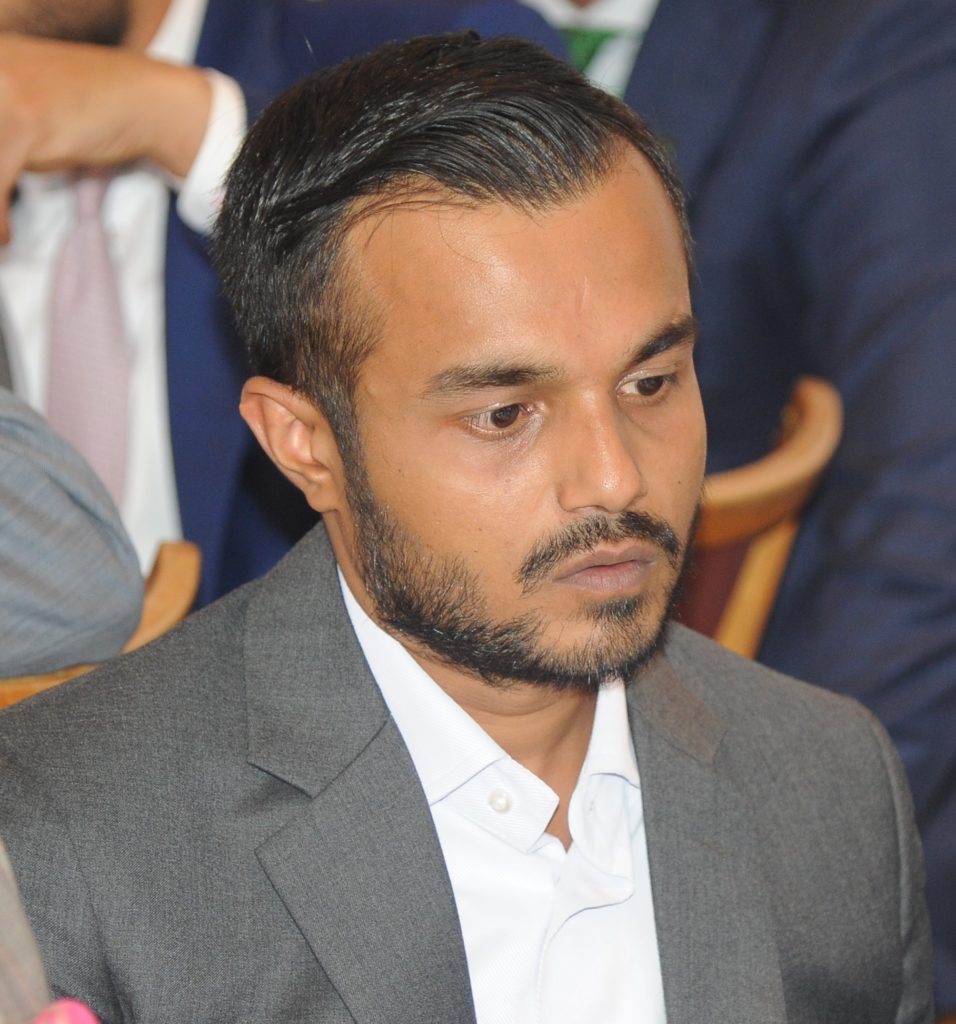
The last thing that I wanted to talk about is the most important thing, that we have to know our customers, and it’s a very manual and expensive process that we have. I think that it’s very time consuming and repetitive for financial institutions leading up to poor customer service and also from a regulatory point of view a big risk area. How that is going to change with some of the things I’m going to talk about shortly, it’s important but additionally we are being challenged by very demanding expectations from the stakeholders.
These are five big picture trends. Now, let’s put something in context to Pakistan. These trends are all globally. Pakistan, just a couple of thoughts; one; you heard this in the breakfast also you heard it again and again, we have a very young population, 70 percent of our population is under the age of 35, it’s millennials and younger. That’s the one that I’m telling you is a lot more receptive, adoptive and willing to do a lot more things differently than we have been doing in the past, and if we do not change and adapt to their needs, we’re going to become dinosaurs.
Pakistan, one; as a result of the young population, it’s a very fussy population and I think we need to understand that. We’ve done a lot of data analytics on this population, it will switch immediately if they do not get the level of service that they want. For example, in our call center if your call does not get answered in three minutes and three minutes is a long time, we have done brought it down to one minute, you’ve lost your customer. We’re talking now minutes and seconds rather than days and weeks and this is important for us to understand how we are doing that. We have a very large population, we have 162 million NADRA eligible customers and only 20 percent of that population has bank accounts. If you add the wallets, that’s another 28 percent, so we have like 40-45 percent wallets and bank accounts compared to 85 percent tele density. There may be duplicate subscribers and all, and it’s growing very fast. As I mentioned, last year it grew by 10 million, size of the population 50 million was added in the last five years in terms of size and are very active users. All the data is very supportive for all the things that are going to happen and it supports a lot of things that are going to happen in the revolution that we are going through.
Pakistan has a very low financial inclusion both from a mobile consumption and from a financial services point, and this is a busy page but it shows that Pakistan is in the bottom quartile whereas countries like China, Malaysia, Thailand and I’m only comparing it to Asia, so we are clearly at the bottom of this and our opportunity should be how do we move up to the top quartile. We are lagging behind if you look at instant messaging in developed Asia, it’s 41 percent we are only at 19 percent. If you look at networking and social networking, while we say we do a lot of Tiktoks and we do a lot of social messaging, it is 70 percent for Asia and we have 56 percent. The most interesting thing to note is in financial services and mobile phone and my friend here, Muzaffar, who is the largest manufacturer of mobile phones in Pakistan, 56 percent of the transactions are happening on mobile phones, so already we’ve adopted to that whole change that’s happening in the industry. With that, what we need to do is how do we continue to keep pace with all the changing needs and become more and more inclusive, and try to move our penetration to a higher level.
I mentioned to you earlier Pakistan has had a number of visionary steps that we have taken and I would like to give credit to State Bank of Pakistan along with the other stakeholders, FBR, PTA, NADRA, and many more. I think this is just a laundry list of things that have happened, from digital banking regulations, Raast which Ikram sb talked about, AMA, which he also touched upon, which is obviously something that’s going very well and Salman can talk more about it. Asaan Digital Account, these are all things that are happening already.
We have already developed this RDA which I’ll touch upon, Roshan Digital Account, digital onboarding, micro gateway, all of these things are things that have happened or are already in place, so I’m not talking about visionary; this is already there. Then on the financing side we have come up with a number of initiatives whether it’s to the expat community through Roshan Apna Card, through electronic warehousing to catering to the poor people through Mera Pakistan Mera Ghar, subsidized housing mortgage scheme and many more things on the renewable energy.
From a regulator point of view, we’ve been supported on that, and with this happening, with those global trends, I just want to also leave you with this thought that the future of digital – today a typical bank does 50 to 80 logins – in the future, research is telling us, it’s going to do around 300 to 350 logins. Mobile payments are going to be around 500 to 600 compared to 50, so this change is happening. Now if you don’t partake into that visionary banking, you’re going to be left behind because this is what your customers will be wanting, they’ll be doing a lot less branch visits and a lot more using your mobiles.
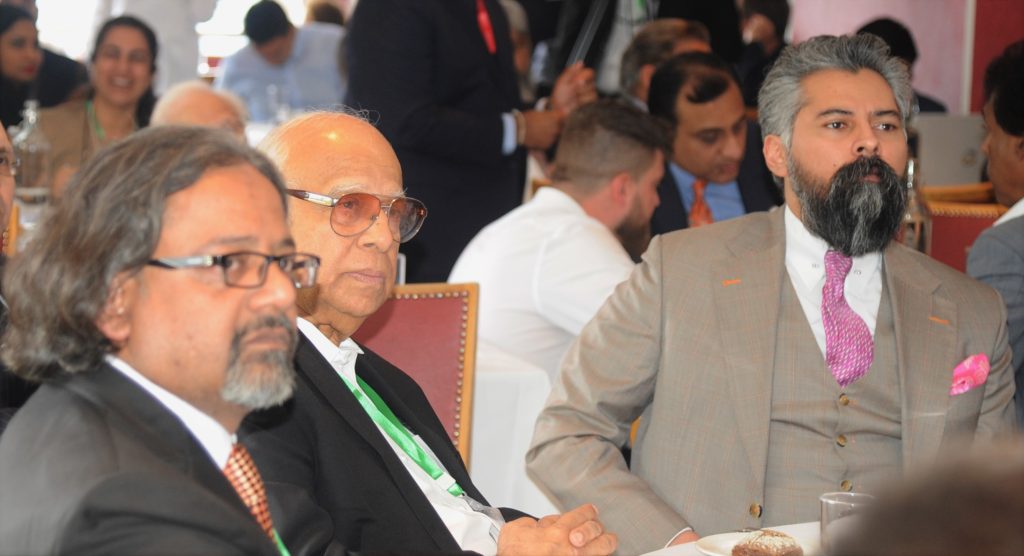
So ladies and gentlemen, digital banks have been powered if you look at it, by a lot of existing and emerging technologies and a lot of them are no longer emerging, whether it’s iCloud financial partnership, big data, artificial intelligence, I told you I’m not going to drop these words, but these are all things that are already in place. We will have ubiquitous automation within the e2e ecosystem, you’re going to have an invisible automation that will happen, which will connect A to Z and that’s the nirvana stage that we are looking at.
We at UBL have been able to do that in certain sectors and what it will do is, it will be totally invisible and you won’t even feel how we are going to connect all the dots. Using our partners like fintechs, using artificial intelligence, using internet of things to really do it. I think that is going to be the end game that we are trying to achieve.
Open banking; we have just launched something in the digital, which we’re doing with a big partner. When we talked about operational resilience, we have done satellite crop yields and weather predictions, virtual metaverse; we have been working on that with some of our partners there, with a university and fintechs, we’ve been collaborating with a number of players including the Pathfinder Group so I think this is all happening but for this to happen, one of the prerequisites for that would be Agile Target Operating Market. Basically, the way we do things, we do it with agility, the days are gone when it took weeks and months to do something, now it has to happen fast. If it doesn’t happen fast, if it doesn’t happen on a timely basis, this young population that you are trying to cater will switch over.
The best performing agile banks are doing almost 500 to 1000 releases, whereas an average bank in the region does only 25 to 30. Productivity-wise, if you look at it, time to market, it takes around eight to twenty six weeks on things to happen whereas for an agile bank, it takes from two to four weeks. All of this, while we’re doing it, it’s for a better customer journey, better customer experience and that’s what’s the need of the hour. Our customers are demanding that, reduction in operational cost has come down by 20 percent if you do that. We have done it at UBL and it’s really worked well. Delivery time has improved by 25 percent and attrition has gone down by five percent.
We are not doing it because it’s nice to have or it’s something good I can come here and talk to you about, but it’s really going to help the bottom line and it will again allow us to play a pivotal role in this digital journey along with our number one purpose also, how do we eliminate poverty in a country like Pakistan and play our role. This is some data, this is our journey in terms of what we have been doing. We started a bit ahead of our competitors and we’re very fortunate, we had some foresight, in hindsight what worked out was that we came up with the first agile island before anybody was talking about agility. In 2016, we developed our own delivery lab, Agile Delivery Lab in which I welcome any one of you to come up with any use case, any issue you have, and we can help you develop a solution based on a very detailed design-thinking around it.
We have a digital factory which has been very successful and now we are really making it not just limited to IT and digital, it’s bank-wide enterprise integration of digital technology and business and we are almost there. What we want to do is become a totally agile organization, we don’t want to have large teams doing things, we want to have nimbleness, we want to have fair operational models that work with subject matter experts across different departments and they can work with fully empowered authority, and they can deliver.
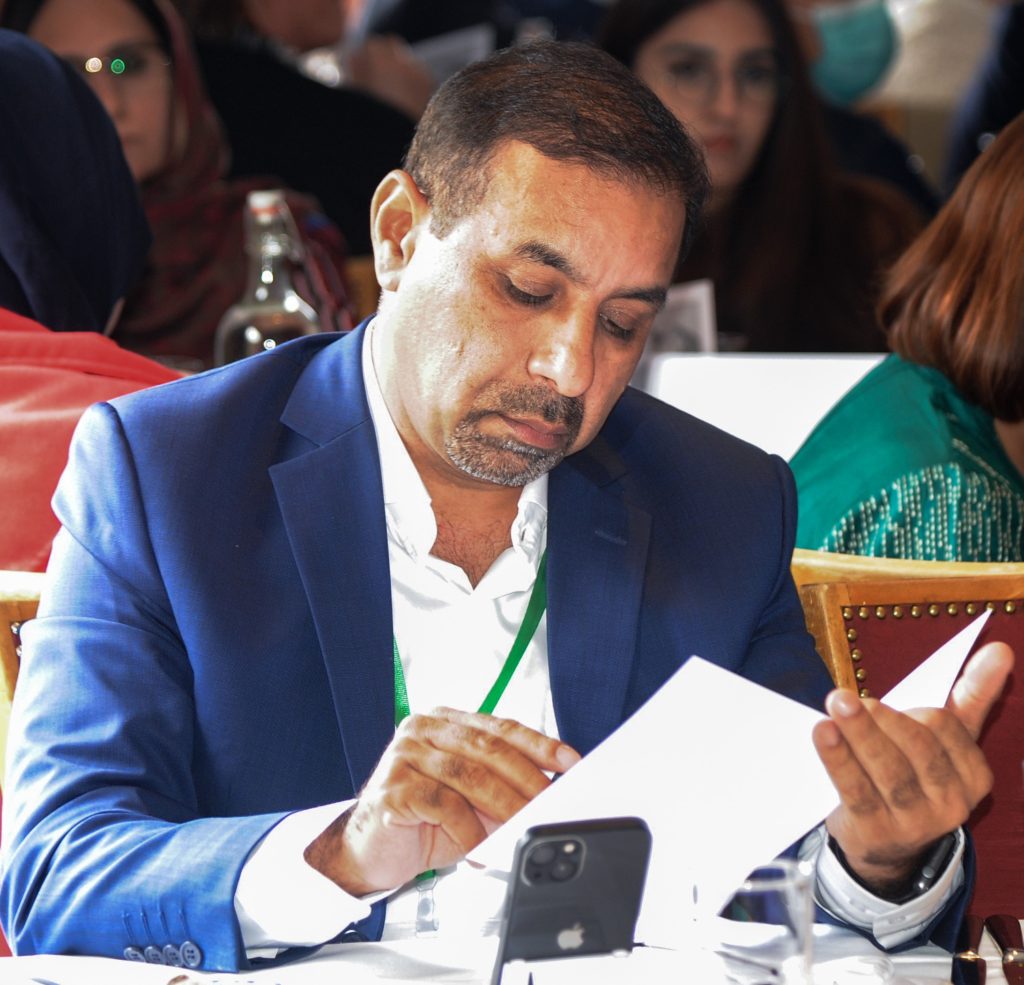
A bank that we look up to today if you ask me, and this will change, is DBS in Singapore, they have done this bank-wide integration and you can see their results, you can see what they have been able to achieve in terms of growth, in terms of their market capitalization, in terms of investor interest in that company and I think that’s something we aspire to do. At least one example that I would think of in terms of what they have become, in terms of their open banking platform and it’s been a very powerful one. For us it’s been a fantastic journey so far, we were able to come up with a digital native proposition, product and features are channel agnostic so we really don’t care which channel they’re being used at, fintech integration and incubation is acting and again we’re doing seamless integration with our partners rather than trying to create for each one a digital platform.
So design thinking, it really becomes the cornerstone of what we do and I’ve touched upon it. I’m not going to read all of these things but these are the top 10 things that we look at when we are looking at anything on onboarding. A good example of this is Roshan Digital Account which the State Bank of Pakistan in collaboration with a handful of banks came up with. Today that product has been a resounding success in less than two years, they’ve been able to raise $4.2 billion. It’s been very successful in terms of the number of accounts, over 400,000 accounts. That journey, we could have done it very quickly but a lot of time went in, with all the stakeholders.
We did a lot of research, we defined what our purpose was, we empathized on what the customer wants, empathy is a very important characteristics that we as bankers need to have. We cannot no longer be, I’m UBL or I’m xyz and I need to do that. If you need empathy, you need to brainstorm, you need to do prototypes, you need to develop, test and iterate, because these are things that would really provide. Design thinking has increased revenue and return to shareholders twice the rate of any industry peers. I’m not saying, this is again a Mckenzie Business Value study that has been done which confirms that.
My one other takeaway to all of you, when you’re thinking of doing something even in your own organizations, apply the design thinking and an agile way of doing things. I’m very proud that starting early, adopting agile thinking and design thinking, numbers don’t lie as they say, we are the most profitable bank in Pakistan, we have the number one mobile app, we have got really amazing feedback, we are leading the way on the Roshan Digital Account, we are playing a very important role in the remittance business, a question that was asked to me earlier, $6 billion dollars come through our counters, we have been onboarding, Asaan Digital Account, we did it the fastest in a competition recently. We have won numerous awards and best digital bank and again the growth in registration, transactions, they all have been 50 percent plus for us.
I don’t take this as getting complacent, I know competition is all over me, they are really getting strong and I think any banker who stands here and says I know it all or I know everything about it will be really dumbfounded the way things are moving. I think this is a testament of a lot of teamwork from my UBL colleagues, obviously none of them are here right now but I hope they’re listening and hearing me, very proud of them because they really work day and night along with all the stakeholders, whether it’s the fintechs, whether it’s the technology companies, whether it’s even our banking colleagues, whether it’s the regulator, and this is no coincidence that with some real dedication and hard work, and the support of the board and my management team, we were able to achieve that. But good design is good business and I think that’s something that we take it very seriously, even though it’s been quoted by Thomas Watson at IBM.
Last few slides; again, I just wanted to give you examples how does it matter before we used to do heavy cost on KYC, KYC stands for Know Your Customer. We went through a very old archaic model of onboarding a customer, going through a series of processes, but we’ve just completed a two-year program of implementation state-of-the-art financial compliance transformation program with EY and it’s been ranked and recognized both locally and internationally and we’re very proud of it. So today we came through blockchain and there’s a blockchain center downstairs in town and I encourage all of you to go there. But what we have been able to do through using block chain technology we are able to do a bulk customer onboarding which again reduces our chances of error, better controls, lower cost and again it gives a lot more reliability and validation. This is again working and it’s something that we are doing.
I told you I’m not going to just drop the words but I’ll tell you why it’s working; AI and Big Data. Historically, I’ll give you an example, when you went in to go for a loan or something it was, what’s your age, what’s your gender, what’s your education, where do you work, what is happening in your country, in your city, in your industry, I think that’s all still relevant, know your customers and get the 5 Cs and everything else, but there’s a lot more data available today on all of us, and how do we utilize that data is going to be extremely important and again whether it’s their consumption behavior, what they are buying, who they are buying from, when are they buying, what are they spending the most of their time and social capital on, which communities do they belong to, are they part of an aviation club, are they part of a motor club, are they part of the Harley-Davidson club and then we can cater and be very focused on what we want to offer them, because otherwise, we are just barking up the trees spending a lot of money.
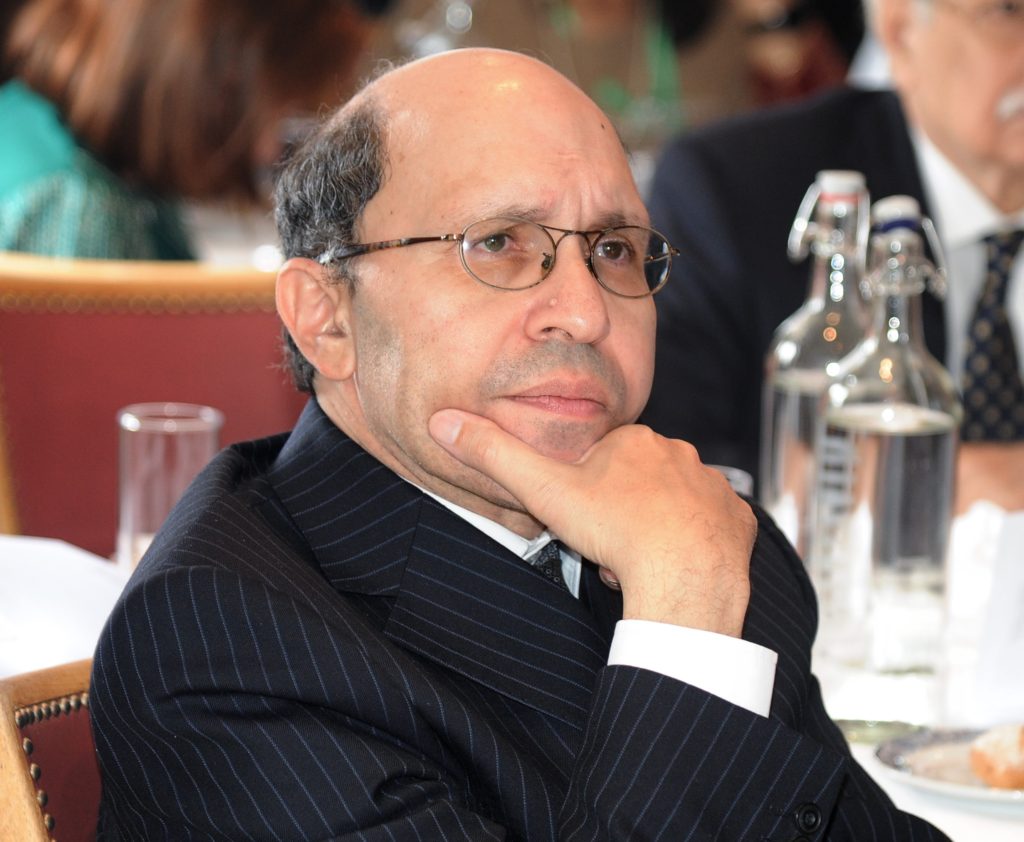
If I know this person hates flying and has no interest in in traveling, sending them all these offers about the great travel deals that we have would be a little colossal waste of our resources. But having said that, if we know that they like to travel, they like to come to Davos and they’re part of the Sehgal family that spends a lot of money in Davos, (laughter) I think I know exactly what to offer next time that this family is coming in February, so get ready, stay tuned that the Sehgal family will be hearing from UBL, but honestly I think that’s what’s happening and we’ve also been doing a lot of macroeconomic stress testing and what it all means is that we’re able to do better credit scoring and be able to offer a much better solution. It reduces our cost of risk, but at the same time brings in people into the net which were not at all available.
The fact that you have a mobile phone and the fact that you are doing top-ups and the fact that you’re paying your bills on time, tells me a lot about your credit behavior which before I did not have. A lot of people don’t have a home, they don’t have an electricity bill but they do have a mobile phone, how often are you topping it up, are you really topping it up when you’re on the verge of expiring and on the verge of your minutes going away tells me a bit about how well to do you are, what kind of financial flexibility you have and all of this ultimately helps me also on my earlier mission that I said, poverty alleviation, because I will be able to get to them.
We have done some work with i3 Pathfinder, we have done some very good use cases on agri-tech partnerships and what we have been able to do is using predictive statistics and data insights on internet of things, we’re able to really do the imagery of what’s happening with the farmers and based on that we’re able to give better, attractive pricing to the farmers for their financing needs and for fertilizers and other things. It’s worked very well and we continue to do that.
This is a page that I think it’s worth being proud of for Pakistan, we have a very vibrant fintech landscape though I think it’s small, 350 million last year but I think it’s an industry that could reach 50 billion by 2030, and I think for that to happen we need to really use the best expertise, whether it’s in digital payments, digital lending, financial information, health tech, Logitech, education tech, because what it tells us is, there are people who have learned this art a lot better, they know what they’re doing and what we need to do as large banks, collaborate with them and work together and if you really look at Davos’ theme it’s all about collaboration.
This world is becoming smaller and smaller, it’s a smaller village, and I think people who are going to collaborate with the best in class will be the next winners and we are working very closely with a number of them. I would like to again mention Pathfinder on what we are doing with them in a number of their subsidiaries that they have, whether it’s VRG, whether it’s iPath or any others that are out there. I think what that is telling us that startups have been doing very well, there’s been a phenomenal rise, they’ve raised in only first quarter, 200 million dollars and this is the name of the few that are the leading platforms. We have partnered with a number of them Transwise is for remittance, Upbeat for digital lending and many more. Our aim is to continue to invest in fintechs and continue to grow our franchise and again come close earlier to market.
This is my second last slide I know I’m standing between lunch but this is a very busy slide but what it’s telling you is this invisible ecosystem that I’m talking about, I won’t give you the name of the company but we work with a sugar mill that we were able to work right from the farmer all the way up to the consumer and able to really come at the middle of it and provide a bunch of services using API, using artificial intelligence, using satellite monitoring, using internet of things for paperless sourcing, using AI driven order management, real-time m-commerce and what it did effectively was, we were able to connect all the dots in a very seamless manner. What was the result of that? The farmer was happy because he or she was able to get financing and very good market intelligence of what’s going on from a weather perspective. At the same time we were able to ensure that the sugar mill that was buying the crop from them got sustainable product i.e. sugarcane on time so they could be able to then provide that to the customers whether it’s Coca-Cola or Pepsi or biscuit factories and so on and so forth.
I think this whole journey was being put together and we like to replicate this for every industry, for every client, where we are going to be able to really sit down with them, do a very detailed design-thinking and we are going to try to provide this, and with this we are able to go beyond our comfort zone. Our comfort zone probably would have just been to service the sugar mill but today we can go right to the farmer and provide them with support, at the same time to the consumer who’s buying it, you’re also doing a bunch of stuff for them from a tax competition point of view, digital lending, personal financing, so it’s just been an amazing win-win for the customer. It’s solidified our position with them and we hope to do that with many more Insha’Allah in the years to come.

Last slide, I promised you this is the last slide, ‘The Bank of the Future.’ I could have dropped a lot of words here, a lot of acronyms but I think it’s very simple. The Bank of the Future will no doubt be digital. Anybody like I said in the opening, anybody who think it’s going to be otherwise is seriously mistaken. So first of all the Bank of the Future is going to be digital and the second point that I want to make is, it has to be simple. Keep it Simple, Stupid, the KISS mentality, reduce the burden on the customers, provide low touch yet highly delightful customer experience. The customer journey has to be at the forefront of what we do. Third, it has to be instant, highly efficient interface that responds to customer needs in a very timely manner, proactively maximizes the customer outcomes using AI, and that’s again something that’s no longer emerging, it’s very much there.
It has to be modular, if you look at it from that point of view it has to be like IKEA, when you go to IKEA you’re building the blocks, right? You cannot say you will do everything, it has to be done in a modular manner, in an architecture that works. You’re taking the best in class services of others and managing it, while managing your own relationship, it has to be relevant. This is an important point, you have to deliver customer experiences to every customer using sophisticated application of data and technology, one size doesn’t fit all, you have to be relevant to them, otherwise you will be outnumbered.

Transparent and social responsibility; this is a big theme even in Davos but we all have to play our role in this. We cannot say if they are not doing it I won’t do it but we all have to play our role. We touched upon this earlier this morning also but direct access and support to innovative applications allowing full visibility in their financial activity and related advisory. I think that’s important in a country that where our tax to GDP is low. We need to address that point because that’s going to help us bridge our fiscal gap. ESG will be the fabric of the bank of the future, we have to work on that, gender diversity at banks are at 20 percent, should be at least 45 to 50 percent in line with our population and global standards. We have to work on carbon emissions and do things that are going to be both important to the country and to the world and I think we can really play a very important role in helping some of the global companies get to their carbon zero targets in a timely basis. We need to be highly compliant with shared databases and governance and control. Data is the oil of the 21st century, and the data that we have, which banks get because customers trust us, we really need to protect it and ensure nothing happens to it. Hence, we need to have very robust cyber security, Dr. Aftab and many others here can talk a lot more about it, and lastly I would say we need to integrate banking activities seamlessly into the life cycles and that’s the invisible part. If you’re asking one word that describes the bank of the future, it will be invisible. It has to be invisible, we will be in the middle of everything but we will be invisible and that’s if we do that right that will really make us very successful. Banks that are trying to say I’ll do it all myself or I know it all, will again be the net losers, and the ones that are really able to collaborate, work and focus on these seven qualities will be the ones that would be very successful. So with that ladies and gentlemen, thank you very much. Salman, thanks for having me and happy to answer any questions if anybody has. Thank you.
Salman Ali, CEO VRG: I would like to now request Mr. Zafar Masood sb to present on how digital transformation has been going on at the Bank of Punjab.
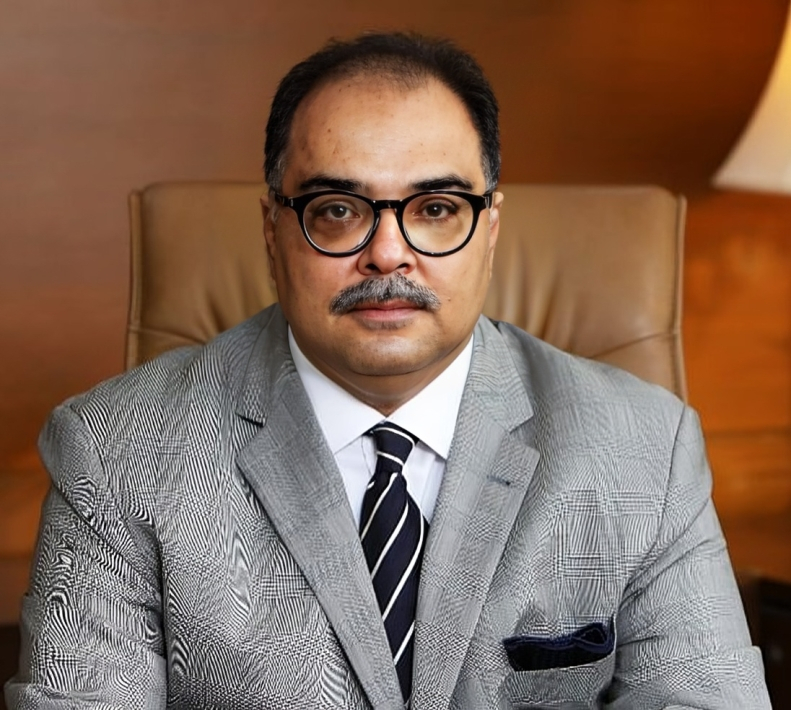
Mr. Zafar Masood, President/ CEO The Bank of Punjab: I would like to acknowledge the efforts that Ikram sb, Pathfinder and Martin Dow team has made, but really the appreciation has gone to the next level today. When I strolled on the high street this afternoon and I saw that the representation of other countries has been having manifold higher than us, and I really wanted to salute you and Martin Dow group for keeping the flag of Pakistan high.
I think it’s very motivating and it’s about time institutions like ourselves must recognize that we all have to play our due role in events like this to portray Pakistan as what it truly is, rather than as I call it, the CNN-view of Pakistan across the globe. We have to really represent what we mean for the world, what’s the opportunity out there and how and what is in store for the foreign investors there.
The topic of today was a pretty interesting one, Visionary Banking, Shahzad has done a brilliant job as always in terms of covering it in a great detail particularly on the digital side. I have tried to make it more broad-based and I would like to cover the other feathers also as far as the visionary banking is concerned.
I’m very pleased to be here to discuss highly exciting field of visionary banking. The challenge for banks in this highly dynamic and tech-driven market is to continue to innovate, there’s no other option but innovation. Connect their organizational values with the values of their customers, driving sustainable finance, spreading financial literacy, alliances engaging with microfinance institutions, with fintech players and leveraging digital information and data.
We at Bank of Punjab have followed a truly visionary approach to technology, ensuring strong fundamentals, keen awareness of the market, solid architecture and team dynamics, robust governance and compliance and an overarching purpose and intent. Focusing on digital transformation, there are four things; driving innovation, unlocking economic competitiveness and enhancing socio-economic inclusion in a country which is fifth most populous country in the world, and a higher population of available labor force, reasonably high level of literacy rate.
Shahzad has already covered that in detail I’m going to talk about it in a cursory fashion because there are other things which are in store for you and I’m sure that will keep your attention to the screen rather than to the food. When we talk about the climate of Pakistan, it’s varied in its topography. There are four seasons. I’m very proud to share with you that in South Asia we have been the number one reformer in terms of ease of doing business. An improvement has been 28 points in merely one area alone.
The bulk of the Foreign Direct Investment has been in the private sector, oil and gas sector and the financial business sector. However, that trend is substantially changing now, and new attraction is being seen in the technology space as well as the tourism sector in Pakistan. The main investors are China, US, UK, Netherlands and Hong Kong. Now at this juncture, ladies and gentlemen, I would like to share a small video with you depicting Pakistan as an investment opportunity. This video I am very emotional about, and Faisal will vouch for it. I would also like to acknowledge the great work done by our media team here, Faisal and his team, Mansoor, Ali, without them we would not have not been able to project the real face of Pakistan, so thank you Faisal, thank you very much. Let me just share that video with you and then we will continue with our discussion.
(Video played, Applause)
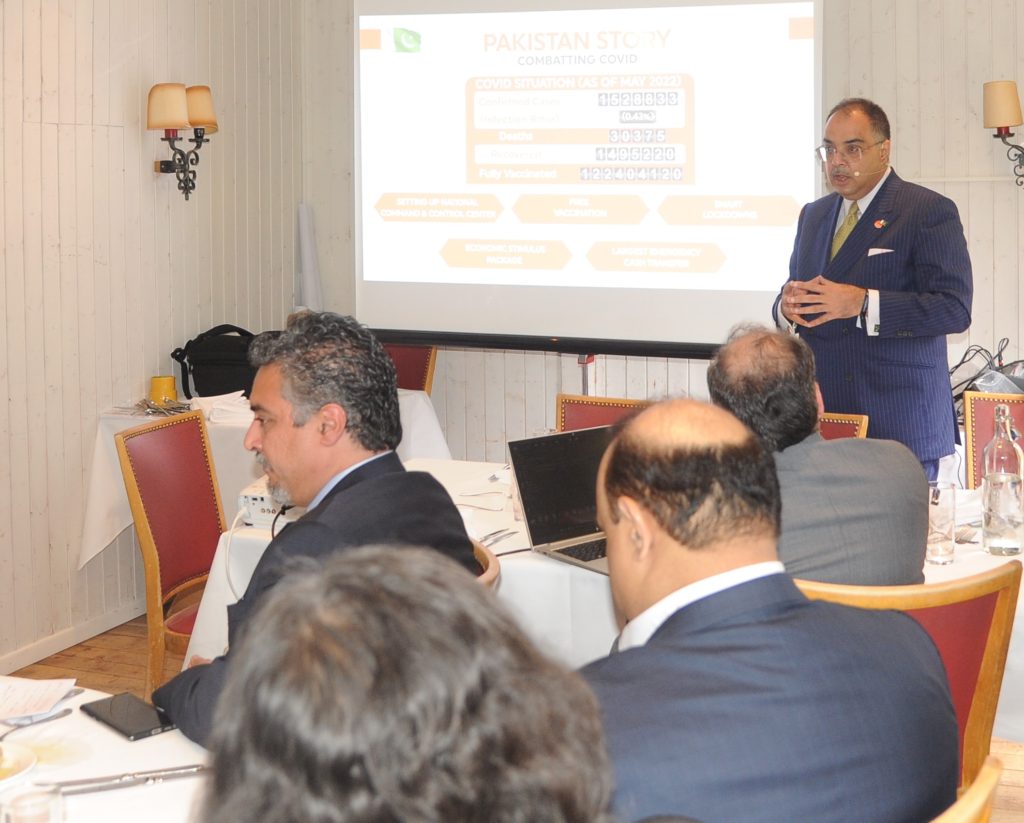
So with that, I would like to move on to talk about the banking infrastructure and payment infrastructure in Pakistan. We have a pretty robust banking and payment infrastructure in place. The mobile wallet verification in Pakistan has been a real success story, and in terms of digital financial services Pakistan still has a huge opportunity owing to a larger a bankable population which is outside the banking arena right now. This could only be achieved through adoption of digital financial products which has been low so far.
Another success story of Pakistan, and it’s a real big success saga when it comes to handling of COVID. We’ve done exceptionally well, and there are four or five big, larger initiatives that we took which resulted in a response which really helped the economy to sustain and grow. This year we expect it to grow at six percent, it’s not a small feat, it’s a huge number by any standards and that’s all happened because the government took the responsibility of it. There was a there was a National Command and Control Center which was set up to ensure agility and effective reforms to mitigate the impact of pandemic. They’re introducing a massive vaccination campaign including rolling out the first of its kind drive-in vaccination center, perhaps in the entire region, implementing very smartly the lockdowns and then of course rolling out economic stimulus package which helped the trickle-down effect on the economy. Last but not the least and my favorite perhaps is the largest emergency cash transfer which is, to arrest the situation. We approached the pandemic both from a trickle-down effect as we saw in the case of economic stimulus package and then a bottom-up approach through largest emergency cash transfer, perhaps the largest in the world. So discovery of the visionary banking in Pakistan, there are obviously conventional ways of assessing visionary banking. However, there are new and emerging ways of measuring success.
We have combined both the industry direction along with our own set of values, industry directions on profitability, customer growth, business valuation, fundraising but our own values as Bank of Punjab where empathy, disruption-efficiency and customer experience stood out as the real measuring factor and we’ll just later on see some of the testimonials in that regard as well. In accordance with our positioning, conceptualizing what visionary banking entails, we centered it around five core pillars. First of all, is obviously the customer and community. So when we were we were preparing for this presentation here, we thought that it’s very important to make sure that customer and community are together and that remains the first and the foremost thing as far as our core is concerned. We’re designing customer products and services which is exclusive for example Khidmat Card as we talked about earlier, Punjab Mazdoor Card, or e-stamping, these are a few examples. The segments of demographic pyramids, marginalized and underserved segments, to Islamic financing, to agriculture micro and small medium enterprises, based on robust distribution channels and outreach, remote accessible DGBOP, our digital banking offering along with internet and mobile banking and now WhatsApp as well.
The second pillar is on strategy and branding, this has always been my point of view that in banking there are two or three things which matter. I was talking to Kabir yesterday about it only, and I think strategy fits in at the center of that plate around which the entire banking business revolves around, so the strategy and then branding it with something. Strategy without branding fails substantially, and there are three main phases of that. Conventional ones, fix, grow and transform, they are underpinned with cohesive brand identity entailing customer base and profit, aggressive product services while building capacity and capturing low hanging fruit, this is on the growth side. Then transforming the industry disruption, several industries first were done by the Bank of Punjab including area yield insurance, electronic warehouse receipt, easy financing and big data analytics. To tie it all together, our reimagined brand identity was also very important, participating in non-conventional areas like literature festivals and I know Martin Dow is very keen on such initiatives, so we are also making our effort in that arena and offering first of its kind, for example sports affinity card.
Number three and very close to our heart, being an organization which is people and community centric, Bank of Punjab, the third pillar is people and culture. For example, batch hiring of women and persons with disabilities. Sensitizing trainings for our staff to accommodate these people within the organization as well, it’s one thing to get them in, it’s the other to make sure that there is proper acceptance for them and promotion for them as well. Our workspace to ensure handicap accessibility, we modified them, special fast track promotions for members belonging to underrepresented and marginalized groups, and special advantages were given for diversity and inclusion initiatives in the annual performance reviews. On the policy front, HR policy front, we are probably the only bank which has introduced affirmative action policy, a deterrent from retaliation policy and pre-onboarding psychological evaluation screening against something which is a rarity in the sector.
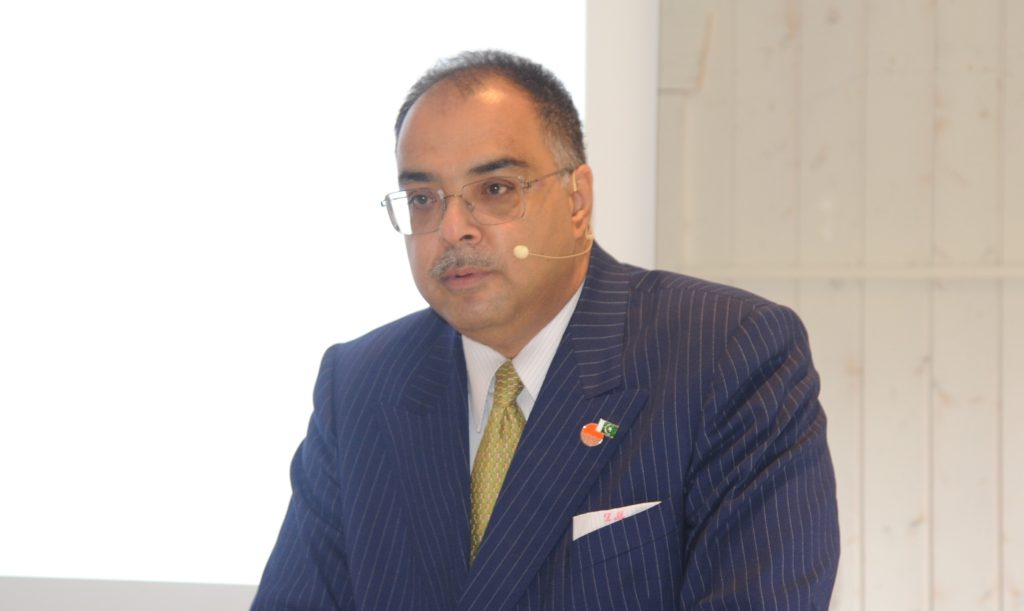
One thing that we are doing which nobody else is doing and we think is very important is that we are on a continuous basis, going through the psychological evaluation of our branch managers and operation managers in the remote areas. The problem is that they’re too far away, they’re too empowered and we need to make sure that they are psychologically settled, that they are aware of their shortcomings and then work with them to make sure that their mental strength is not compromised anywhere. In the COVID response, our case was unique we were the only bank and perhaps the only organization, in fact, I have to retract this statement because Zarrar this morning said the same thing about Pathfinder, we gave special bonuses to our staff during COVID because they were on the front line and they were in the branches so they deserved that extra money. In fact, a lot of people attribute my plane crash survival with that initiative as well, I don’t know how far that’s true but we did it as an organization, we believe this is the right thing to do and we’re very proud of the fact that we did it.
The second last pillar is of course the governance and compliance. Again, who would understand this better than Dr. Aftab. I can’t see him around but Aftab sb and I, having had discussion with him and the governance and compliance piece is very critical. It remains a key component of our visionary strategy, realigned and restructured robustness, dynamism and prudence.
We have restructured our governance system by introducing efficiency and broad-based decision-making within the organization. We have improved our financial metrics and performance as a result. Operations and technology, goes without saying, there’s a whole presentation that I did on Monday, I’m not going to repeat all of that but the key ones there are of course the foundation for innovation. The key areas of focus are building a future ready bank, consolidation and integration, and fastest implementation of digital banking infrastructure. Whoever has been aware about the Bank of Punjab, we have been a pretty archaic bank three years ago, and we got some inspiration from banks like UBL and all and trying to leapfrog and catch up on that deficit. I’m really proud of my team, Shahzad is here, Asif is here and the team back home as well, that we have been able to achieve in some of the cases fastest implementation on the digital side including the recent Temenos Infinity implementation which is the fastest in the region.
We’re also looking forward to and working very closely with the Pathfinder Group in terms of digitizing the future banking and payment landscape, with the potential of collaborating more, not just the payments, eventually digital banking as well. The idea is, something very close to my heart Ikram sb, is related to the farmers and suppliers. The offering that you have integrated in that system, I think that’s the real game changer. Then, as part of our initiative of overall promoting financial inclusion, we have digital financial inclusion which is really a case study, for collaborating with Punjab Social Protection Authority, which is first of its kind digital financial inclusion solution for disbursement of cash grants to members of the vulnerable population groups, inclusion of over 1 million individuals was achieved. Then inclusion of blue collar wage labor segment, the OP again stands without parallel, in collaboration with Punjab Employees Social Security Institute, we have been able to revolutionize and offer Punjab Mazdoor Cards which is another visionary initiative. We have been able to include 1.2 million members through this initiative alone. Our tagline is Har Fard Ka Khayal, which means Care for All, something very close to our hearts, my entire team, and we really follow that in letter and spirit.
It has portfolios across all products, prioritizing equity, empathy and tolerance. I would like to repeat these three words because Pakistan does not seem to be connecting with this, somehow, which is very unfortunate. Equity across all genders, across all sections, empathy and more so tolerance. You saw Gurudwara there as well in the presentation. Then the entire spectrum of our valued clientele making sure that we are including everybody and anybody who is out there and could potentially be part of the banking system. Now some of the impact stories are here and I believe that the visual impact of those stories and they sharing their experiences with you would give you a better idea of what the impact has been of our initiatives on the visionary banking side then me just telling you about them so here we go. (Video played)
You saw how the financial inclusion initiative of ours have actually impacted people directly. The efficacy of measure known by the impacted people as we’ve just seen but there are a couple of other things as well that I would like to share.
For member of marginalized and underprivileged communities, we have been able to create employment of over 9000 people in the last couple of years. We have been able to provide Rs. 8 billion to 8000 borrowers. We’ve been able to express one billion rupees to 1100 women, we’ve been able to offer 3300 plus to agri-SMEs, and we supported them and our outreach on this clean lending front has been in 64 districts of the country, particularly those districts which have not been part of the banking ecosystem in the past.
On economy housing finance, we have been leading with wide margin, we have passed the 10 billion mark. We have been able to by the way, and this is I need your attention especially the ladies in the room, they are the ones who I am talking about by the way, 17 percent of the borrowers on the low income housing are women borrowers. At this point in time, while we are here, there is a project taking place, it’s being celebrated by the Prince of Wales, in London whereby we have supported Heritage Foundation. I don’t know how many of you are aware of the Heritage Foundation, Karachi whereby we are creating a whole community of zero carbon housing which the women are creating themselves, and we have supported that in collaboration with an Islamic microfinancing entity, and Heritage Foundation whereby they will return that money to us and that will help in developing the whole ecosystem in that community. 27 percent financing was done in the informal sector through scorecards, 75 percent to the salaried class, 16 percent of the portfolio and this is also very important, Islamic financing. I think Salman was talking about it yesterday, Islamic financing is something that we have not talked about especially in the context of financial inclusion and I think this is very important to highlight here. Then this whole initiative was spread across 28 districts of the country.
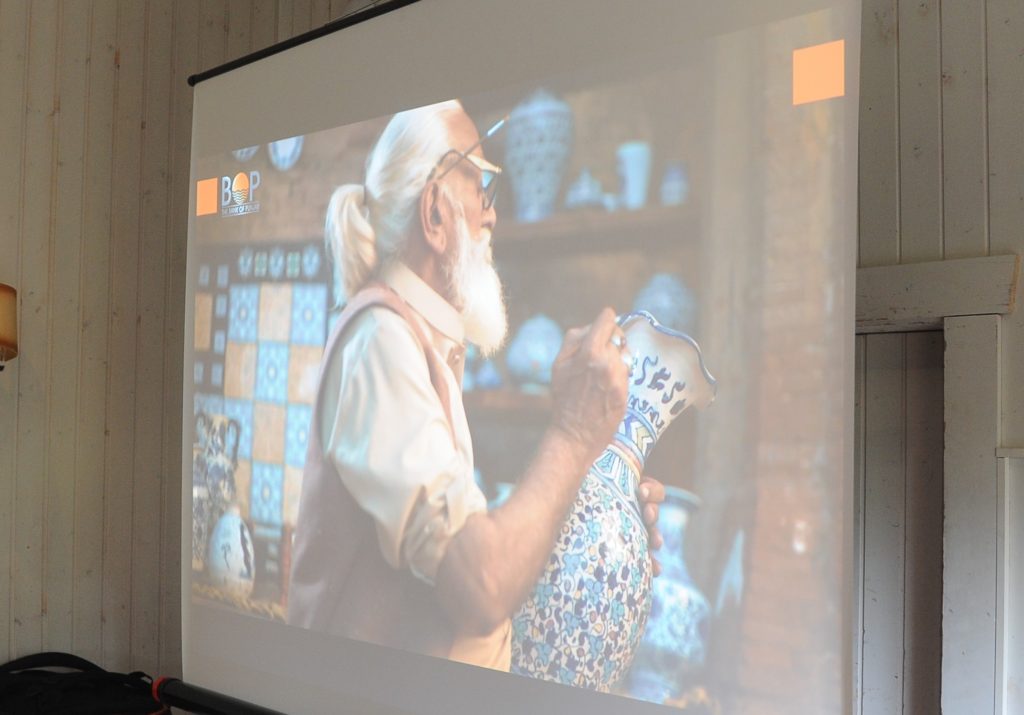
Let’s first look at the impact of the two initiatives that I talked about. (Video played)
Last, ladies and gentlemen, but not the least and the most important one as well is related to our trajectory for the future, particularly in the space of technology. We have a very progressive and revolutionary roadmap, one of the first when exploring a presence in the metaverse space.
This morning only we went to a couple of pavilions on the high street and we’ve been able to explore two things; one the NFT, how can that build into some kind of NFT, but more so, we’ve also explored the possibility as a starting point, getting the inspiration from the recent very successful concert of Justin Bieber, where we were thinking of getting the space at the Metaverse, and rolling out the Qawali event, so we are just looking at it, learning from the best, let’s see how far we’ll go with this.
At the end ladies and gentlemen, I would like to highlight this. I think Zarrar talked about it this morning, about the art and culture. So this is a great project that we have restored, and for me, the visionary banking cannot be just taken away from the social and the cultural elements. So ladies and gentlemen, last year we have been involved in restoring 175 year-old paintings, these are 11 murals which are there at Lahore Fort from Raja Ranjit Singh’s court.
It doesn’t just end here, let me just elaborate on this, so it was done by a big and very famous Hungarian artist, called August Shaw. He did those paintings 175 years ago, those paintings were getting wear and tear, and they restored them and then we depicted the tolerant face of Pakistan because it was cutting across at least three different cultures, the Sikh culture the Hungarian culture and obviously the Pakistani culture, and that went down exceptionally well with the globe.
I’m very proud to share with you that as a result of that we have been recognized and been given the highest civil award by the government of Hungary last year in August. And this is my personal belief that we can talk about finance and banking and economics but if you try and take this away from the social elements of it, if you try and take this away and out from the cultural aspect of things, trust me no economic success will have any meaning, it will have a short life and it will have very limited impact. So therefore ladies and gentlemen, in my view, the visionary banking is a fully integrated banking related to the entire society the entire culture, and promoting art and music and painting, as Zarrar also talked about this morning, without that there is no visionary banking, thank you very much.
Salman Ali, CEO VRG: Thank you for such a wonderful presentation, so let’s hear something about the real success story of U Microfinance bank from Mr. Kabir.

Kabir Naqvi, President Ubank: Mr. Ikram Sehgal, Mr. Ali Akhai, ladies and gentlemen, a very good afternoon to all of you. In the interest of time I’m going to do a quick monologue and share my experiences as a banker for the unbanked.
So I’ve got a unique privilege of being part of two startup banks that were primarily formed for financial inclusion purpose. One was Tameer Bank which is now Telenor bank. We started out in 2005, took it to scale and won many awards and we launched a brand which is very well known in Pakistan by the name Easypaisa. I moved on from Tameer Bank in 2015 to take over a sick unit, if I may say, of the PTCL group which was troubled, they were not able to take it to scale. In 2015, a similar model microfinance back to the branchless banking license, with the same mission of banking the unbanked.
Now, a bit of storytelling is important here, and I will give some credit to the central bank because their foresight, obviously in hindsight when you look back all the stuff that I’ve been seeing for the last 14 to 15 years, we had a great story for teledensity and the banking density gap, vis-à-vis the teledensity gap was huge. Back in the day it was about 100 million cellphone users, the time that I’m talking about versus 12 percent banking penetration in Pakistan. So the game was in using the digital channels or the mobile phones for providing financial services to the wider population, and a lot has been done over the years.
Now three telecoms out of four in Pakistan bought microfinance bank licenses, they bought out microfinance banks, and bought a branchless banking license to offer financial inclusion services. Now the marriage between a telecom and a microfinance bank is not a coincidence. Now I’ll tell you why. The flagship product in Pakistan, on the branchless banking platform has been domestic remittances followed by bill payments. The average size of domestic remittances has been 4,700 Rupees which tells you about the kind of client that is using the service. Anybody who is transferring 4,700 rupees average is clearly not a high incline, and one would even argue is not a bankable client as per traditional norms, so these are the masses in reality. So the hypothesis was tested through this branchless banking service, now there are three players, Paisa, Jazzcash, Easypaisa.
Interestingly, I am happy to share, in fact we get like a purple heart, that we have a storeroom full of what not to dos, because we were the first ones who entered into the space, who dared to enter into the space, because when you work with the vulnerable part of the society, the general impression is that it will not be sustainable and you will not be able to take it to scale, and which is kind of true also. So we have to think out of the box to make these institutions self-sustaining and scalable also, because if you see, if you compare a microfinance bank with a traditional large commercial bank with a huge capital base, one can easily argue that you are catering to five million to eight million clients with a small capital base, how do you do it, and technology is the answer.
So digital railroads were the way forward, and in the digital railroads, mobile phones needless to say smartphone i.e. USSD and I think Salman will would love to add more to it that days of the USSD are not gone in Pakistan at least, because when you leave, as I was saying here the other day, a lot of people are still using USSD and feature phones. So the client where I’m trying to draw your attention is, in order to include people who are excluded, as Shahzad was mentioning as well, knowing your customer is key, and out of experience, you cannot know much about these clients without shaking hands with them which is the tough part, which is a difficult part, so anybody you would like to include, if you don’t know the culture, if you don’t know the dynamics of their lives then they are merely stacks on a spreadsheet, but we talk about real human beings.
So when we took off U Bank, I brought it with me in 2015, and the first idea was to make it very sustainable. Seven years down, I’m happy to share with you that we strategize to have multiple revenue engines, and I’m not apologetic, many people say that a lot of work you do at Ubank is traditional commercial bank work, and you are sort of going towards mission drift and I disagree, why? Because you need to have a sustainable banking institution in order to reach your goals, so we bifurcated the entire balance sheet into six verticals and this totally original, totally homegrown, thought-out process. The six verticals are, when we were primarily doing rural based lending we were prone to locust attacks, floods, a pandemic, and if something went wrong we went into a lockdown, the customer would be in trouble, and we would not be able to serve them as well. So we changed it to six categories and we thought that it is very important imperative that we must enter the bank space as well, and have a wider spectrum of clients that we are serving, and for this we have to build capacity, and we started following the verticals more like retail, rather than only microfinance.
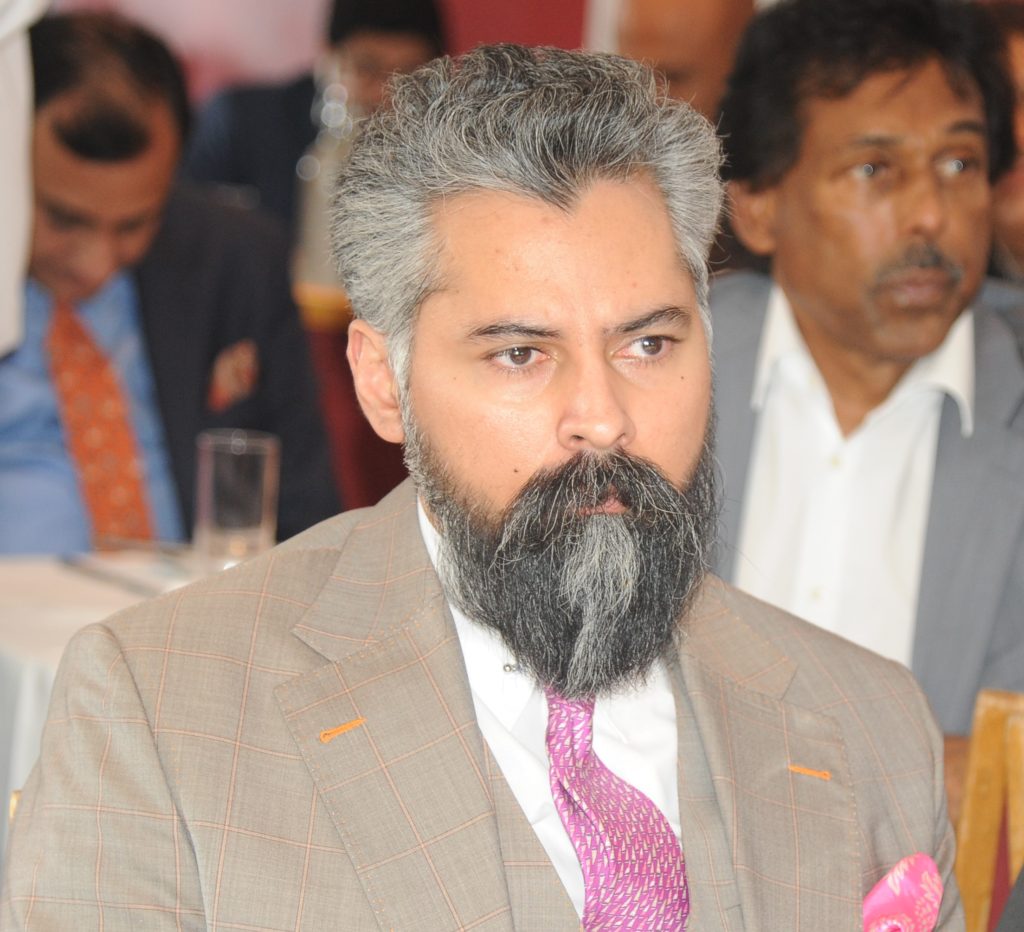
Microfinance in today’s world is part of the stuff that we do, we are into low-cost housing now, larger ticket size loans now, we are into commercial vehicle financing, tractor financing and we will be doing other agri-machinery as well very soon, and agriculture segment was the prime focus previously, now it’s more like a retail segment, because the needs of the emerging middle class have to be understood, a small farmer also needs a refrigerator, a motorcycle and they also have other consumption needs that were previously ignored, even when the regulation came into being in 2001, and the regulation has evolved ever since.
Now the six verticals are, rural retail, the core business that we used to do in microfinance we’re calling it rural retail now, that’s our core, that’s our mission. We have now launched urban setup of branches, so we will be mobilizing deposits from the banked clients and we will be working with large clients as well and we’ll be competing in that space, and we will be deploying those funds where they are needed in the rural parts of Pakistan, so urban retail and rural retail.
On the other side, the stuff that I was talking about earlier; strong revenue engines, other than the microfinance loan engine also we have, I am very happy to share with you that U Bank’s treasury book which was criticized also, is much larger than the micro loan, and it’s a beautiful bouquet of investments, we work with all large commercial banks, we are into override lending and we have specialized profit making treasury function, just to give you perspective; 40 billion Rupees of micro loans and 60 billion Rupees revenues. That’s the breakdown, and total earning assets of the bank, again, to give you perspective as to how lucrative Pakistan is commercially also, when we started U Bank, the balance sheet footing was 2 billion, it is a 104 billion today, organically. And the total asset base, out of 104 billion, over 90 billion of total assets are earning assets, not fixed assets.
On the funding side also, traditionally, microfinance banks would just go to large corporates, pick up expensive money and would be very vulnerable in terms of liquidity, so we had to crack that code also. We went into full retail, did not move away from corporate, we’re doing that but on the same side, at the same time, we have built a beautiful buffet again on the liability side of the borrowing book. The commercial banking sector has an exposure of over 40 billion Rupees on U Bank today. We’ve done TFCs, we’re going for a retail TFC, commercial paper syndication, you name it, we’ve done that and nobody’s done that in the microfinance space.
When you look at the balance sheet you see a great effort and a lot of craftsmanship in order to open up sources of funding, open up revenue engines, and the spreads are beautiful. So treasury corporate finance, rural retail urban retail. Moving on corporate, you would think what a microfinance bank has to do with corporate, I’m talking about MSMEs, micro and small enterprises. They’ve got cash management needs, they’ve got transaction banking needs, they need a bit more sophistication as well and that’s the missing middle where the larger banks were not focused previously, and now banks like BoP, I am very pleased to see are focusing on the MSMEs, and we are brothers in arms as far as that segment is concerned.
Fifth, in the age of digital banking, as I said on Monday as well, the aim, the objective is to include people and digitization is a way forward, but it’s not the only way forward, and yes surely the scale is faster but depends if you talk about savings and payments or if you’re talking about credit, because credit is a different story altogether. When you talk about impact, when you talk about increasing income level or productivity, credit comes, because opening an account and putting deposit in one thing and getting financing from a financial institution, that too in an undocumented part of the economy is different. We are working towards that, it’s going to take some time but we have made an entire digital banking vertical in the bank, we are getting state of the art technology.

Sixth is very interesting, it’s Islamic banking. When we travelled the lengths and breadth of Pakistan, we saw that we were excluding a lot of clients who were more towards sharia-based financing and savings products, so I’m happy to share with you that after NRSP, one of the other microfinance players in Pakistan, they did a pilot on Islamic, we are just about to end our pilot, and we are putting up 30 branches especially dedicated Islamic branches and we are offering Islamic microfinance services in Pakistan, throughout the nation.
So these are the six engines and we’re getting a beautiful response, so internally we use the analogy of an antenna, sadly it’s destroyed now, a plane with six engines, even if two or three engines fail, it is self-sustaining and it’s growing. So that’s been our story and I think sustainability is at the core of it, and I would second what Shahzad mentioned earlier today, that in coming times the definition of who is great and who is small is going to change, because in the digital age, in the age of the mobile wallets, all of us are at the beginning of the whole thing, so it doesn’t matter how many brick and mortar branches I have, it doesn’t matter what is the legacy deposit I have, way forward is using digital railroads and specialized products, using AI, a lot really has been said today and has been done by UBL and BoP, and that’s the way forward. I think a mindset change was required and I’m very happy to share with you that mindset change has been embraced at U Bank at least, that we are a bank that takes public money, we are regulated, but with a specialized mission to bank the unbanked so with that I’m going to go towards the closure of my talk today. Last message that I would want to share with all of you, that in times of crisis, because when you’re part of two startup banks, there are days when you question the entire thing, whether it’s going to work out or it’s not going to work out, so it’s been kind of an entrepreneurial journey for us. Inheriting a stable institution is a different thing, creating something, building something ground up is a very different experience and I’m proud to share with you, U Bank is one of the only stories of building something in a highly regulated space and then taking it to scale, and we are pushing the envelope in terms of regulatory evolution, we are partners with the central bank and partnerships are the way forward. We’ve got relationships with UBL as well as BoP and many other commercial banks where they are providing us the financing muscle to go out there and serve the smaller client so with that, this is time for Pakistan, 80 percent people are excluded, when you peel the onion, you talk about the 20 percent included, you talk about bank accounts, I said it the other day as well, having a bank account is a means to an end, it’s not an end in itself, so we need to talk about sustainability, productivity, improvement in income levels and obviously in the end including people socially and I think I would echo what Zafar said, financial inclusion cannot happen without social inclusion, thank you very much.
Salman Ali, CEO VRG: Shahzad, I personally feel that the overall role of design in a visionary banking strategy is very important. What do you think is the role of product design and implementation? Because considering the fact that if the product does not have a good design, even if you have a very good strategy, it will lead to problems. So what do you think is the role of product design and how should it be implemented?

Syed Shahzad Shahid, Member Bank of Punjab: Role of design, a very pertinent question, I want to divide it in two parts. The first part is by expanding the thought of the visionary banking in a slightly simplistic way, so basically visionary banking is drafting and crafting a strategy based on the visionary principles, methodologies and opportunities which are so far invisible to others, less traveled, so when I say others I mean to say your customers, your partners, your stakeholders and even representing a public sector bank, your government institutions or the government-led institutions as well. To achieve this, you need to have a general strategy, your product should be one notch above them so that they bank with you on top of the competitors.
To me, the real revolution lies at designing a visionary strategy that actually encompasses this unbanked and underbanked segment to uplift them into the financial fold and thereby actually creating an impact. Here, your strategy to actually go through the entire product development life cycle, you start designing and conceptualizing from designing up to the level of adoption, you need to conceptualize the product, product literacy and you need to reach the ultimate stage of product development cycle up to the adoption to ensure your commercial goals and ambitions are achieved.
I believe that Pakistan still needs a fully grown, assisted model to serve new customers. In Pakistan we no more need only a better branch outlook and services which matter and drive customers’ interest. Quite commonly now people are saying that I’m banking with my bank because they are offering great digital banking services.
Salman Ali, CEO VRG: I would like to hear your opinion on how personalized customer experience can be achieved by leveraging the services and the technology.

Syed Tasawwur Hussain, CEO i3 Pathfinder Solutions: Customer experience is definitely the key. Without technology, baking institutions cannot do much. I would like to share that first, to have a dedicated customer experience team who can basically continuously optimize the entire end-to-end financial services customer experience landscape. Once you have such kind of a team in place who constantly operates all this, then it would be possible to enhance the products and the services that an organization has to offer. Using the data that is generated by the customers, which is available on all the digital channels, such as internet banking, mobile, ATM, so once you consolidate all that data of every customer then only it will be practically possible to come up with a personalized experience for every individual so it’s like a multiple step approach. Once you have the team, once you have the data in place and then you basically use that data to identify the customer’s strengths and all, then you will be able to come up with a model, otherwise it would be just like offering experience to someone who is of a different age, and someone who is in the younger generation providing the same experience across the board. So it’s a long step step-by-step approach to get to that level where you can provide a customer experience which can create a difference, thank you very much.
Salman Ali, CEO VRG: We’re having all these discussions on the technology initiatives and data, product designing and strategy. How is this going to be achieved?
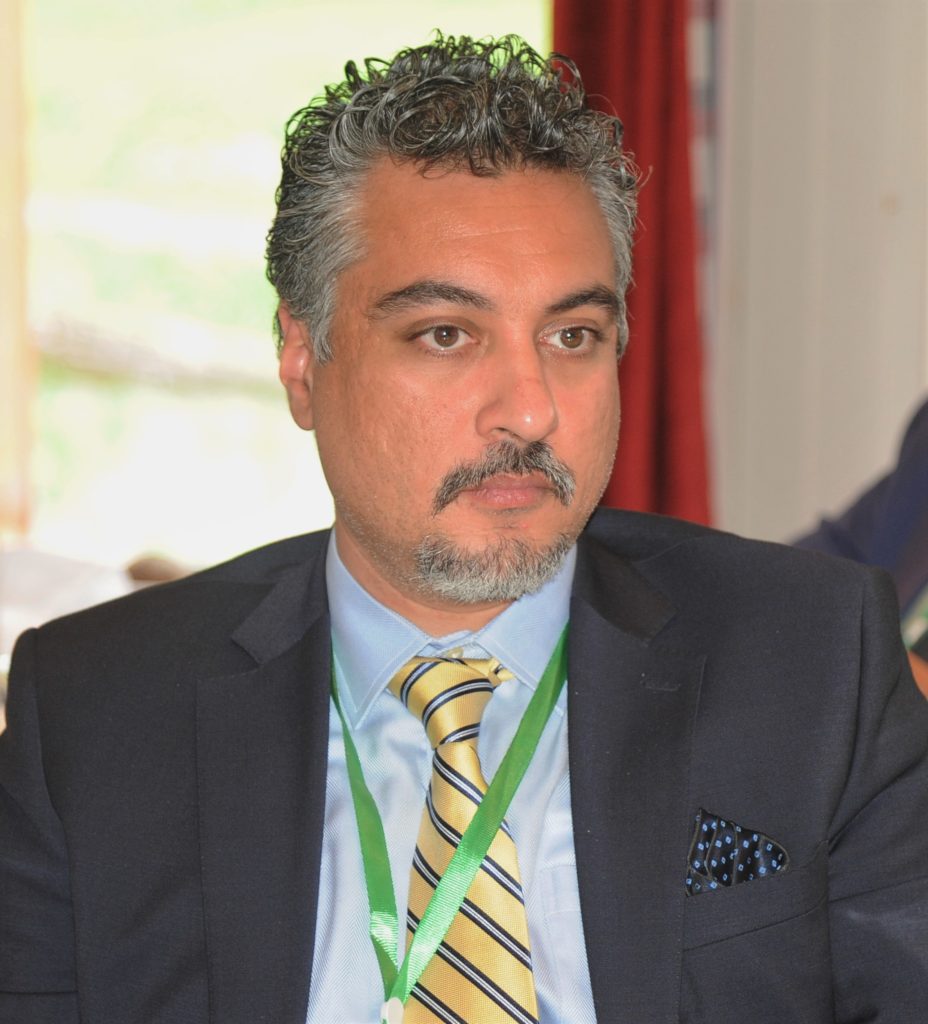
Ali Shah Asani, CEO iPath: Thank you so much. So I’d like to start from the point that when I joined this industry nearly a decade ago, the notion was that banks are dinosaurs, and in the future there’s going to be a lot of banking but there may not be any more banks, so the future of banking is not for banks. What we were seeing at that time was basically the polaroid example, and this was something which also went on in Europe as well, the European markets 8 out of 10 banks basically reported that they knew that the only place the customer can actually make a deposit is the bank so the banks weren’t very comfortable or enticed to actually innovate.
But what happened was that the regulator stepped in there and it lead to open banking initiatives. Similarly, when we look at polar right, when you fail to innovate and those who fail to innovate, those who fail to take the risks are the first to perish. In the 2010s the idea was that if the banks don’t innovate the fintechs are going to come, they will disrupt the entire space and then the banks are going to go out of business or close down. But what we’re seeing actually is a big paradigm shift in the mentality and the mindset of the banks. Banks are now actually opening up, so the banks are opening up the partnerships and rather than focusing on product-based banking banks are actually moved towards service oriented banking.
So every bank is going to take deposit, every bank is going to give you two payment instruments, chequebook and a card, but the bank which gives you the best customer experience is the one that you will opt for. So apparently what happened, let me give you an example, one bank started WhatsApp banking, and everyone joined the bandwagon, so there are always challengers, leaders and innovators. Especially in Pakistan we do tend to stay on the bottom side of the high side to make sure that we see everyone internationally completing their experiments and then actually we go into our technology adaptation. We always wait for the pattern of productivity of any technology before we adopt it, but what we’re seeing right now is that all these banks are basically offering customized solutions, their adaptive technology, open banking, API banking.
Since you have data, you can do so many things with it and that was basically the idea of Banking 4.0, so when you say that I’m just here, I’m not only getting my bank statement, I can get an idea what I am spending on, and if I want to save up for the next six months, maybe I want to cut down on shopping etc., and previously this was something which was prestigious and premium to a higher deposit customers, but because AI and machine learning and data is available, you can just run an algorithm in your data lake and you can get this information and provide it to the customer. Therefore, the first to innovate will definitely be the ones moving forward. The other thing is basically opening up to collaboration and partnerships. In Pakistan, we basically have these open banking initiatives. We at iPath are also getting into open banking. Traditionally if you were to take a loan for anything, you would have to actually go to a bank, fill out a couple of forms, and then the loan sanctioning officer would sanction it, so there was a turnaround time that you will actually get, but think of it right now a banking ecosystem where the bank is directly connected with the fintech.
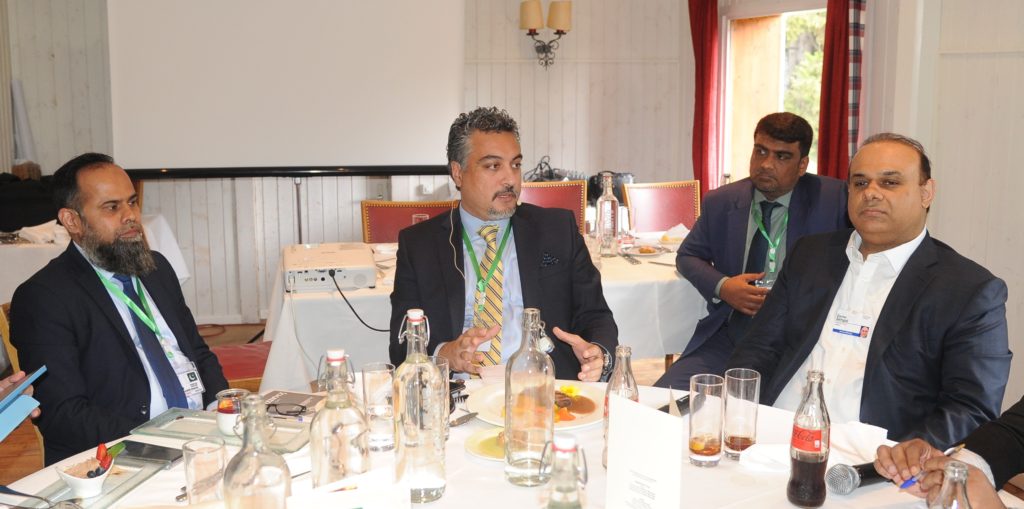
Salman Ali, CEO VRG: By listening all these things, social impact, digital transformation, product, how do you see the relationship between fintechs and banks?
Shahzad G. Dada, President/ CEO UBL: Thanks Salman. Honestly, it’s like any other partnership. It has to be a win-win partnership. Secondly it has to be purposeful. You need to share the same purposes and not one where a partner will work maybe for certain things and the other working for another purpose. Most important thing is that the survivability of both these partners have to be reliable, it is a need-based relationship, and they have to work collaboratively and transparently. If we partner with VRG or any of the Pathfinder companies, or any fintechs, I think we will be better served.
Question: Why is Amazon still not in Pakistan, what are the hindrances? The Science and Technology Minister was here in 2020 and she said she is working very hard on it so why is it still not there? Secondly, what is future of cryptocurrency in Pakistan.
Mr. Zafar Masood, President/ CEO The Bank of Punjab: Amazon is now in Pakistan and we can all celebrate that. Secondly, we are working for a suitable regulatory environment with the central bank.
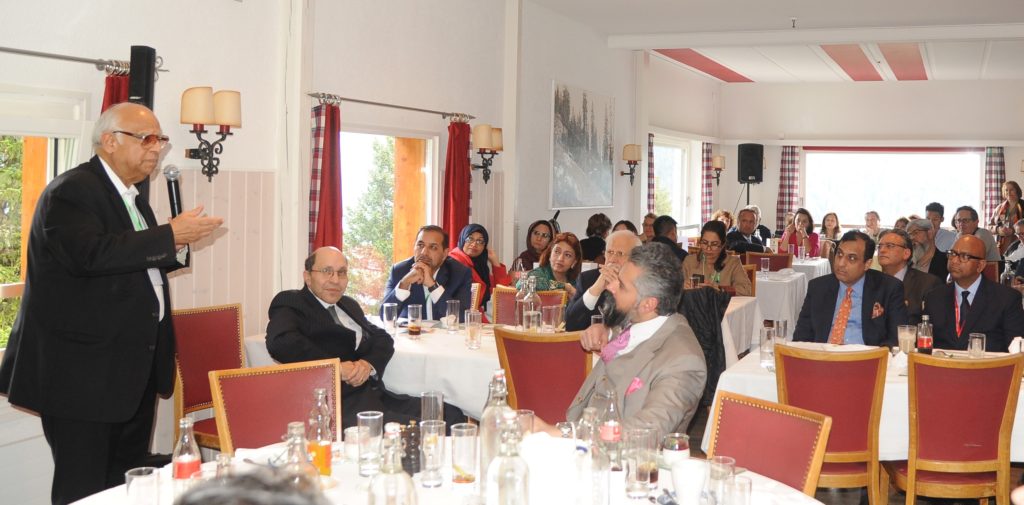
Question: The question is that the economic meltdown that Pakistan is facing right now and I, because of the nature of my profession speak to a couple of people, and some of them said that they are actually in negative because of food inflation and high commodity prices. In that situation, are you really looking at expanding the banking sector? One. Two, you keep talking about networking, digitalization, do you factor in the fact that the access for women to digitalization is minimal. In Pakistan it’s one of the worst, so when you talk about women, and factoring them in are you also talking about digital awareness for the women? Thank you so much.
Kabir Naqvi, President Ubank: From a microfinance perspective, when things go bad and there are kinds of crisis, like in COVID, we actually went through a dropdown and we were in a dilemma, the threat was very real for our staff, and whether to keep the lights on or shut down, for daily wagers, people that we served, it could have had a devastating impact. So, I am happy to share that we did not shut down. When food inflation is high, some people are the most affected, so if in this time we lower the criteria of lending, get some collateral, if not, policies that make it more relaxed and extend them to the loans, they will sail through. That’s the philosophy, so we are expanding even more. In times like these, we are putting out 80 to 100 full branches this year and we’ve already started, and it’s in the remotest parts of Pakistan. I think from my perspective, as a practitioner with the other banks this is the time where we need to work and serve people.
Mr. Zafar Masood, President/ CEO The Bank of Punjab: There is a tough economic situation, we are part and parcel of a larger integrated global system. If there is a meltdown in Pakistan, there is a meltdown globally as well, perhaps of a different nature.
To answer your question, yes, banks will slow down. Every tough environment gives an opportunity for certain improvements. We first hand witnessed that in the case of COVID, the digitization that we are talking about, we have covered at least 10 years in terms of where we are today, so there were opportunities in the situation too.
Women, to be honest with you are very savvy when it comes to choosing technology. I am coming from my experience. The social transfers in Ehsas Program, the entire Ehsas Program is women centric. In many ways than one, the excluded segments, when you give them the opportunity, respond very positively. Thank you.
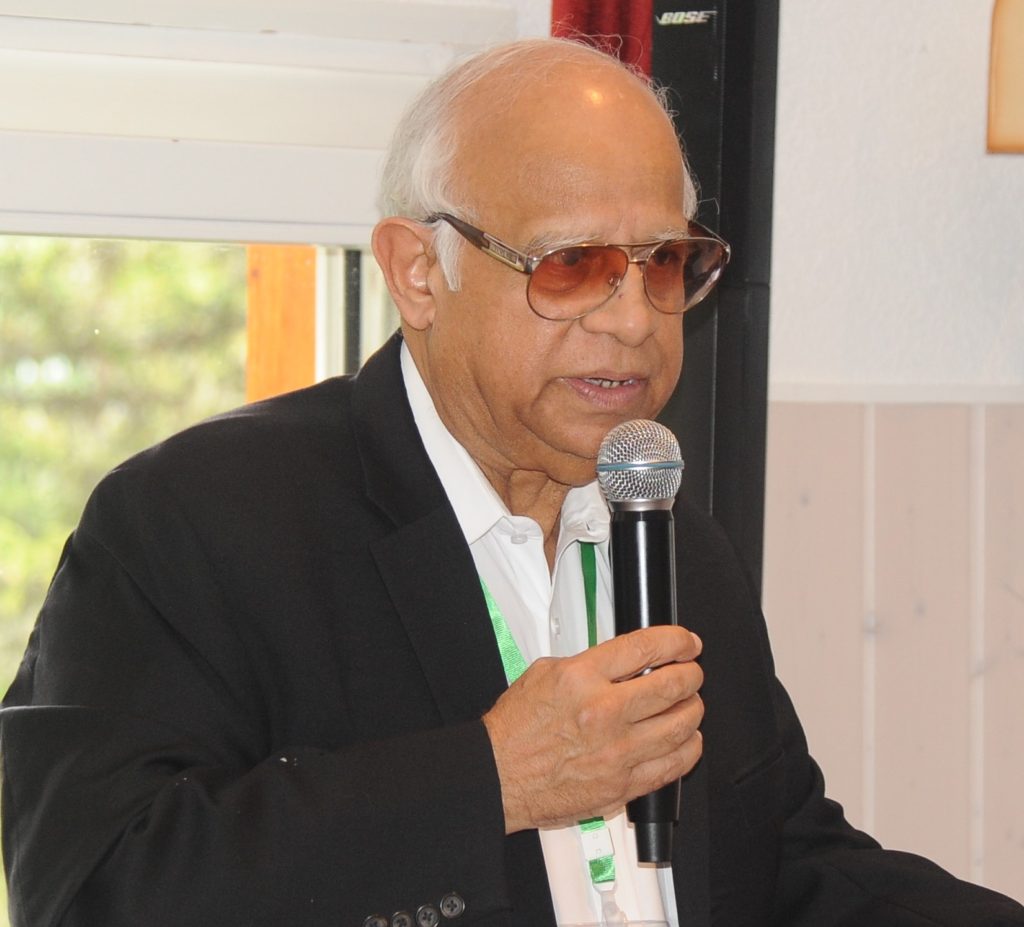
Chairman Pathfinder Group and KCFR Mr. Ikram Sehgal: Thank you to everyone here. I would like to thank all of you for your presence. It has been a pleasure to get visionary bankers here in Davos and for them to convey their thoughts. Pakistan’s interests have indeed not been served by Pakistan not having a better presence. It is not Pathfinder Group or Martin Dow alone, I think it is the duty of each and every Pakistani, particularly big houses to participate. I learnt a lot in today’s session. Somebody who is not here but deserves appreciation is Raza Baqir. I think I don’t need to advertise it anymore, people here to carry this word as far as Pakistan is concerned. How much networking takes place here, it is very much required to build up Pakistan’s image. And do not really expect the government to participate, we had the Sindh Investment event, it went very well. I must tell you that Punjab government directly refused. It does require the private sector to take part. This is a momentous Davos for me, for the first time I passed the mantle to my son, Zarrar, I am very proud of him for many reasons. He is my only son, and when I asked him to run the group of companies, he said I am going to make a mark of my own, and what a mark has he made. For 6 years, he was declared the number one lawyer in the US by Legal 500. I am sure that the senior bankers here can convey to the State Bank of Pakistan that Pathfinder Group is in good hands. I am very proud of my son Zarrar, my daughter Haya who is not here and my daughter Nefer. And of course, I must give credit to my wife Shehnaz. Thank you all for being here, thanks to everybody and especially the senior bankers here.




